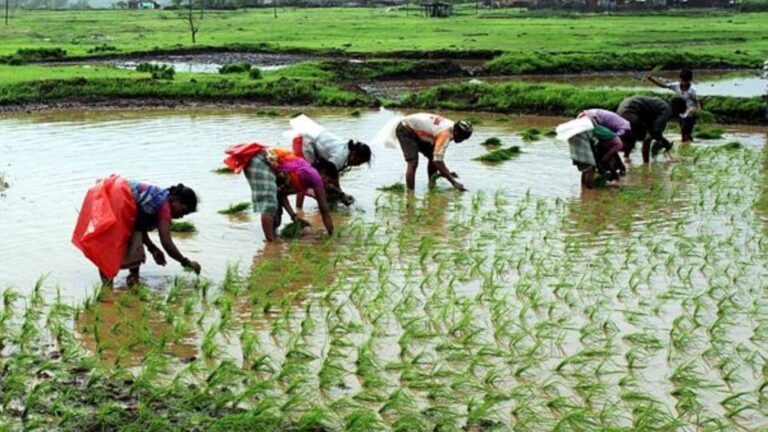
Government Focus on Enhancing Climate Resilience in Indian Agriculture
With the Government of India poised to launch a massive climate resilient agriculture (CRA) initiative covering 50,000 villages across 310 climatically-vulnerable districts (report), now is an opportune moment to highlight the critical practices and strategies that can drive this initiative forward.
CRA refers to farming practices and techniques designed to withstand and adapt to the challenges posed by climate change. It involves using methods that help crops and livestock cope with changing climate conditions such as extreme weather events, droughts, or floods, while ensuring sustainable production and food security.
For 30 years, WOTR (Watershed Organisation Trust), a non-profit organisation, has been at the forefront of implementing climate-resilient agriculture techniques. WOTR works closely with farmers across eight states (Maharashtra, Madhya Pradesh, Rajasthan, Odisha, Chhattisgarh, Karnataka, Jharkhand and Telangana) to mitigate the risks of climate change, reduce cultivation costs, enhance productivity, and bolster adaptive capacities.
Key aspects of these practices include:
- Ecosystem-based Approach (EbA): Integrating soil and water management, eco-friendly inputs, agro-biodiversity, and multi-layer farming
- In-situ Soil Moisture Conservation: Using techniques like crop residue mulching, broad bed furrow, and ridges and furrows
- Balanced Plant Nutrient Management: Enhancing soil health and crop productivity
- Integrated Pest and Disease Management: Employing cultural, mechanical, physical, biological, and chemical methods
- Organic Farming: Promoting natural inputs and processes for sustainable agriculture
- Integrated Farming Systems Models: Improving socio-economic conditions and reducing weather-related risks
- Weather-based Agro-met Advisories: Preventing crop losses due to abnormal weather
- Farmers’ Field Schools (FFS): Facilitating group-based learning for informed crop management
- Crop Contingency Planning: Tailoring plans based on agro-climatic conditions and real-time weather
- System of Crop Intensification (SCI): Optimising resource use for better agricultural production
- Livestock Management: Integrating livestock into farming systems
- Agroforestry: Combining agriculture and forestry for sustainable land use
The impact of these practices has been profound. WOTR’s work in 2023-24 with rural agrarian communities achieved the following:
Climate Resilient Agriculture (CRA) Practices:
- 80,283 hectares were brought under CRA practices, benefiting 2.63 lakh individuals.
- 4,100.98 hectares were brought under micro irrigation.
- 29,988 farmers adopted System of Crop Intensification (SCI) and System of Rice Intensification (SRI) demonstrations.
- 34,618.91 hectares under Integrated Pest Management (IPM) and Integrated Nutrient Management (INM) practices, benefiting 74,210 farmers.
Bio-Inputs Promotion:
- 10,665 hectares promoted with 11 types of bio-inputs, benefiting 25,770 farmers.
Soil Health Management:
- 67,898 farmers adopted soil health management practices across 19,147.7 hectares in seven states.
- 2,194 hectares increased for green manure cultivation.
Training and Capacity Building:
- 26,637 farmers trained in CRA practices through 1,770 Farmers’ Field Schools (FFS).
Organic Formulations:
- 3.48 lakh litres of organic formulations (six types) prepared.
This has resulted in a 20% reduction in chemical application and a cost reduction of Rs 14,820 per hectare in cultivation. Additionally, with the implementation of micro irrigation and the use of FarmPrecise, WOTR’s weather-based agro-advisory app, 20% of crops were saved from losses.
As the government embarks on its new initiative, our proven methodologies and success stories serve as a model of what can be achieved with dedicated effort and sustainable practices.
Explore some of our case stories and articles on CRA here:
- A Happier Harvest
- Rising Above Challenges
- Climate Resilient Agriculture Helps Farmers Regain Their Lost Yields
- From Wasteland to Farmland
- https://wotr.org/2023/08/03/climate-resilient-agriculture-a-comprehensive-guide-for-drought-mitigation-in-india/
- https://wotr-website-publications.s3.ap-south-1.amazonaws.com/26_WOTR-Agriculture-Position-Paper.pdf






